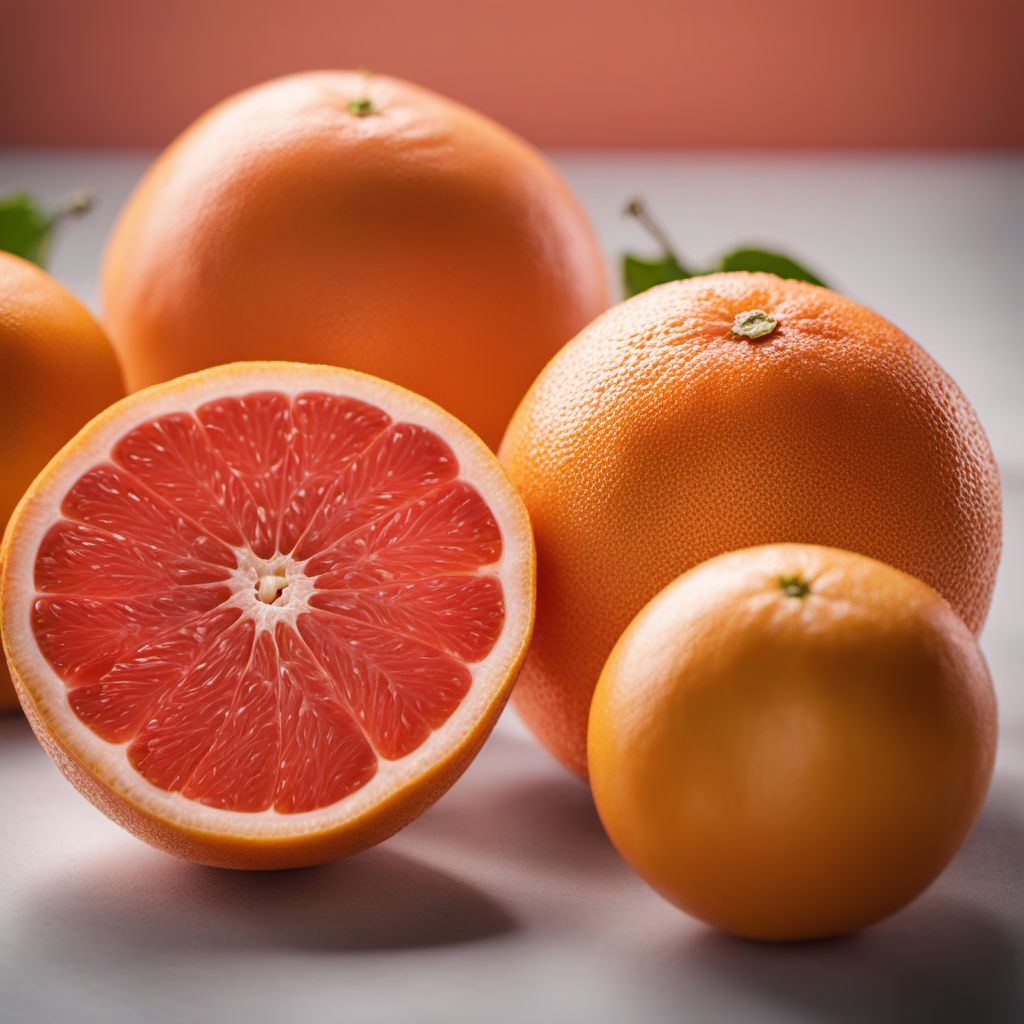
Ingredient
Grapefruits and similar-
The Tangy Citrus Delight
Grapefruits are large citrus fruits with a thick, bumpy skin ranging in color from pale yellow to deep red. They have a juicy flesh that can be sweet, tart, or a combination of both, depending on the variety. The texture of grapefruit segments is typically firm and slightly fibrous. Other similar citrus fruits include pomelos, which are larger and milder in flavor, and tangelos, which are a cross between a tangerine and a grapefruit, offering a sweeter taste.
Origins and history
Grapefruits are believed to have originated in Barbados, where they were first discovered in the 18th century. They were later introduced to other parts of the world, including the United States, where they are now commonly grown in states like Florida and Texas. Grapefruits have become a popular fruit due to their refreshing taste and numerous health benefits.
Nutritional information
Grapefruits are low in calories and high in vitamin C, providing a boost to the immune system. They also contain fiber, potassium, and antioxidants that contribute to overall health. However, grapefruits can interact with certain medications, so it's important to consult with a healthcare professional if you are taking any prescription drugs.
Allergens
Some individuals may be allergic to citrus fruits, including grapefruits. Allergic reactions can range from mild to severe, so it's important to be cautious if you have a known citrus allergy.
How to select
When selecting grapefruits, choose fruits that are heavy for their size, as this indicates juiciness. The skin should be smooth and firm, without any soft spots or blemishes. Avoid grapefruits that feel overly hard or have a dull appearance, as they may be underripe or lacking in flavor.
Storage recommendations
To maintain the freshness of grapefruits, store them at room temperature for up to a week or refrigerate them for longer shelf life. Cut grapefruit segments can be stored in an airtight container in the refrigerator for a few days. Avoid storing grapefruits near other fruits that produce ethylene gas, as it can cause them to spoil faster.
How to produce
Grapefruit trees can be grown in subtropical or tropical regions, preferably in well-draining soil with plenty of sunlight. They require regular watering and protection from frost. However, growing citrus trees can be challenging for amateur gardeners, so it's recommended to purchase fruits from local markets instead.
Preparation tips
Grapefruits can be enjoyed in various ways, such as eating them fresh, juicing them, or incorporating them into salads, desserts, and cocktails. They can be segmented and added to fruit salads or used as a topping for yogurt or cereal. Grapefruit juice can be used as a base for refreshing beverages or as an ingredient in marinades and dressings.
Substitutions
Oranges can be used as a substitute for grapefruits, as they have a similar tangy flavor and juicy texture. However, oranges are sweeter than grapefruits, so adjust the sweetness accordingly in recipes. Pomelos can be substituted for grapefruits in salads or as a standalone fruit, offering a milder and less acidic taste.
Culinary uses
Grapefruits are commonly used in breakfast dishes, such as grapefruit halves topped with honey or sugar, as well as in salads, desserts, and cocktails. They are also a popular ingredient in tropical and citrus-based beverages.
Availability
Grapefruits are commonly available in countries like the United States, Mexico, and Israel, where they are commercially cultivated. They can also be found in many other regions with suitable climates for citrus fruit production.
More ingredients from this category

Grapefruits
The Citrus Marvel: Grapefruits

Tangelos (except minneolas)
Tangy Citrus Delight: Unveiling the Alluring Tangelo

Natsudaidais
Natsudaidais: The Exotic Citrus Delight

Sweeties
The Sweet Sensation: Unveiling the Delightful Sweeties

Other hybrids of Citrus paradisi, not elsewhere mentioned
The Citrus Symphony

Shaddocks
The Exotic Citrus Delight

Tangelolos
The Exotic Tangy Delight


